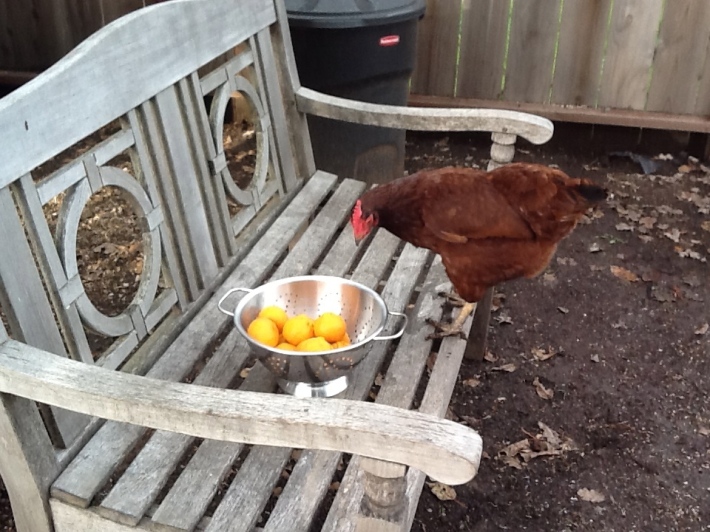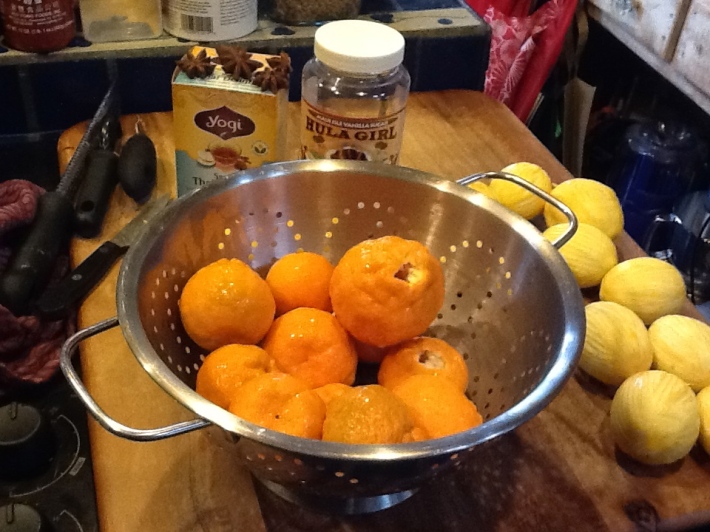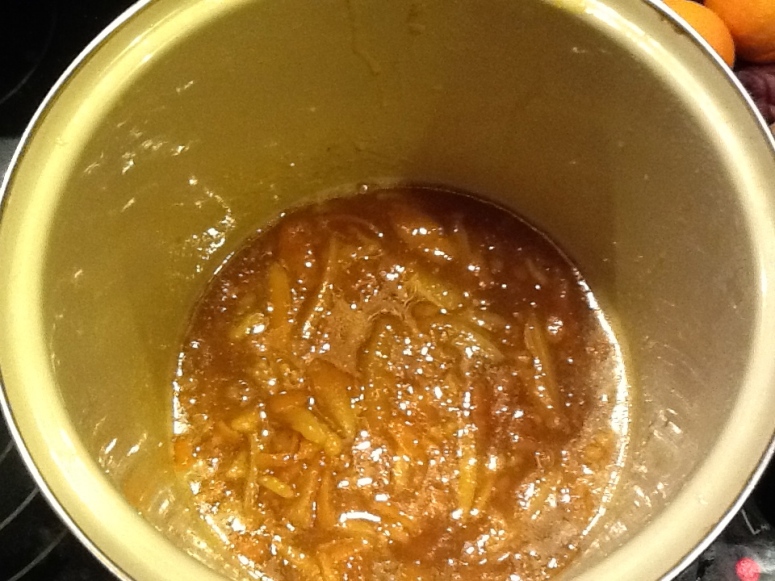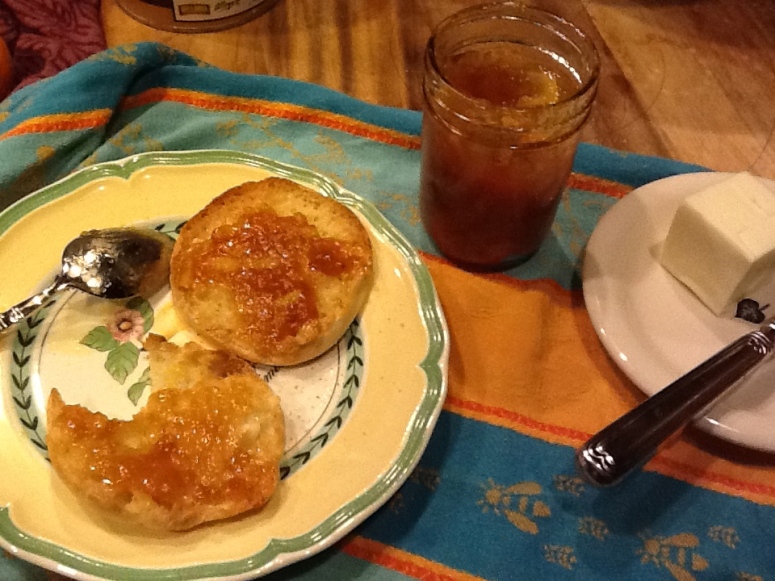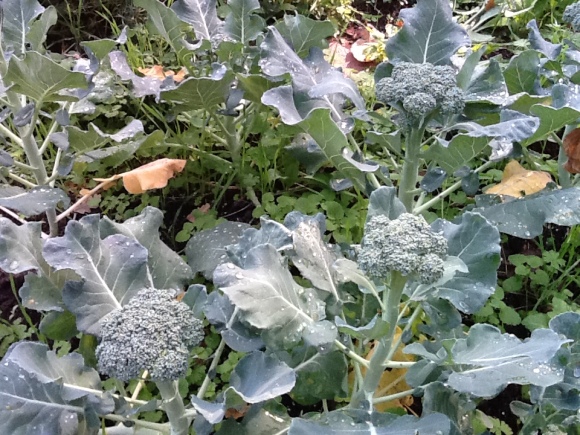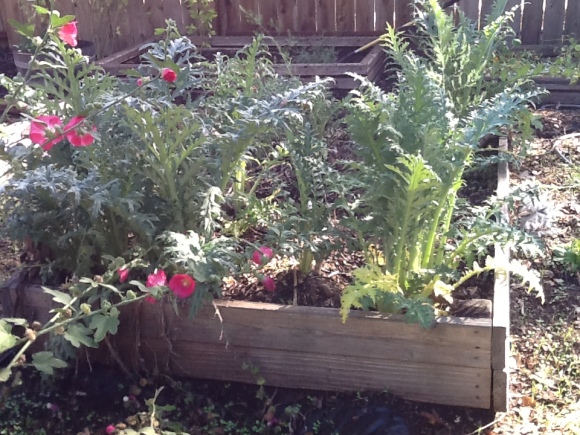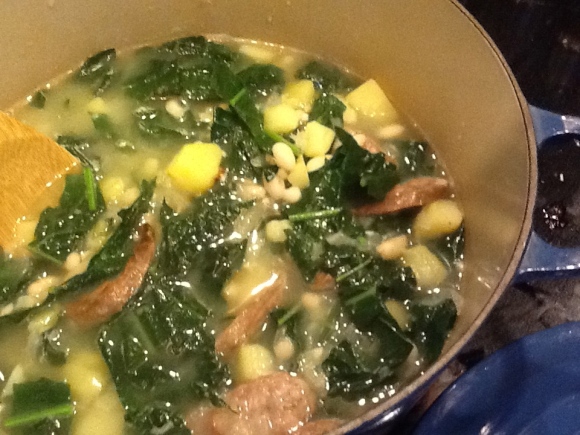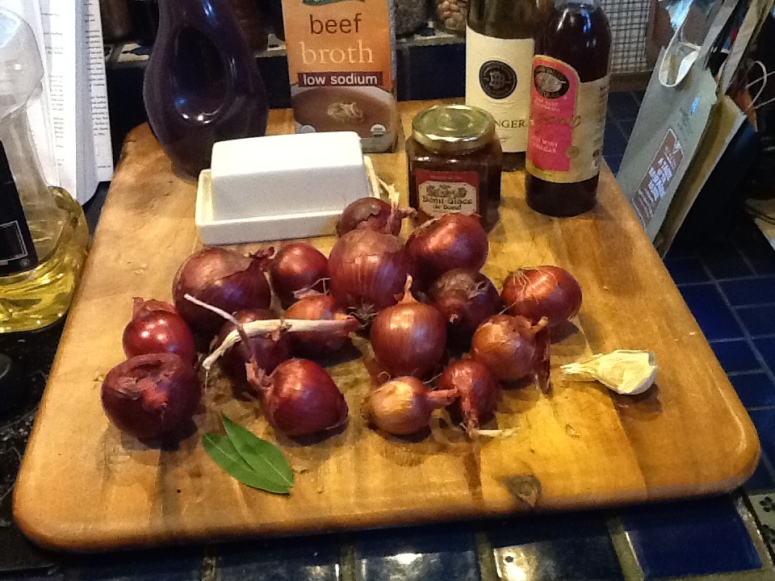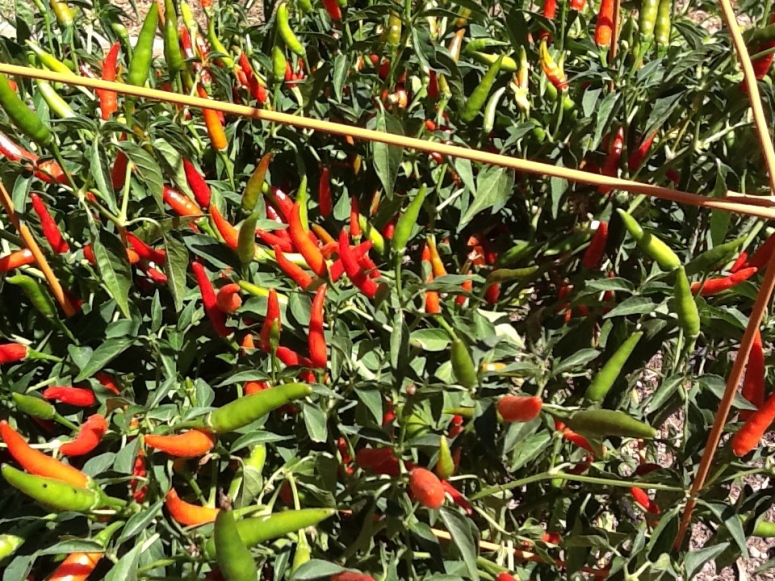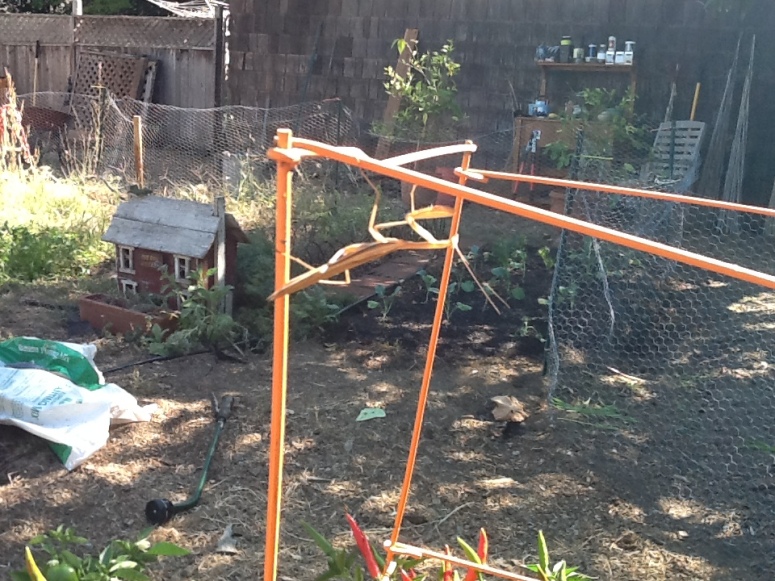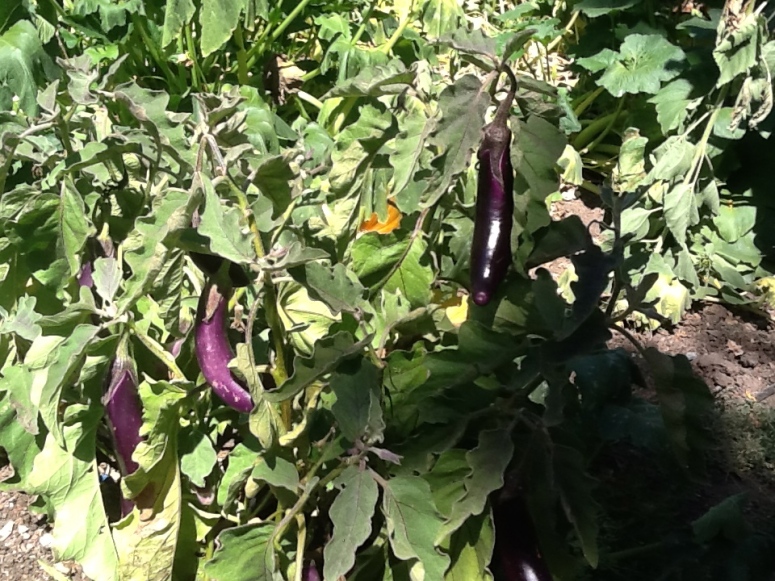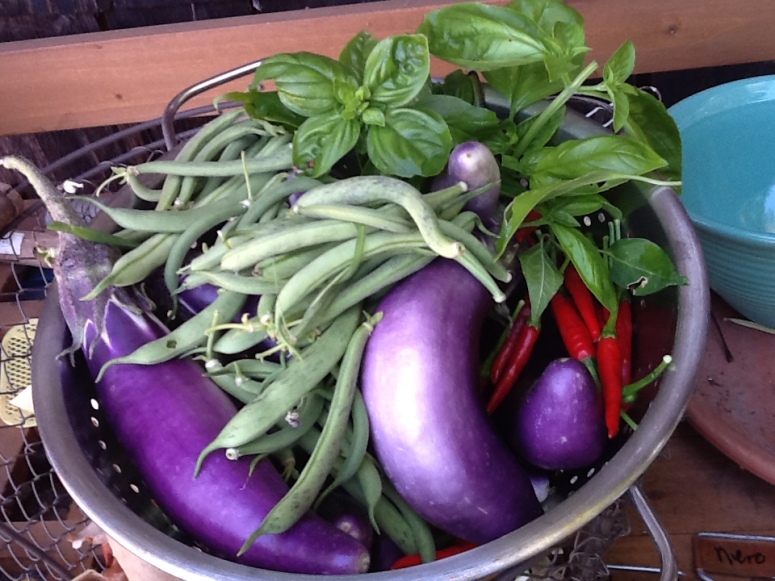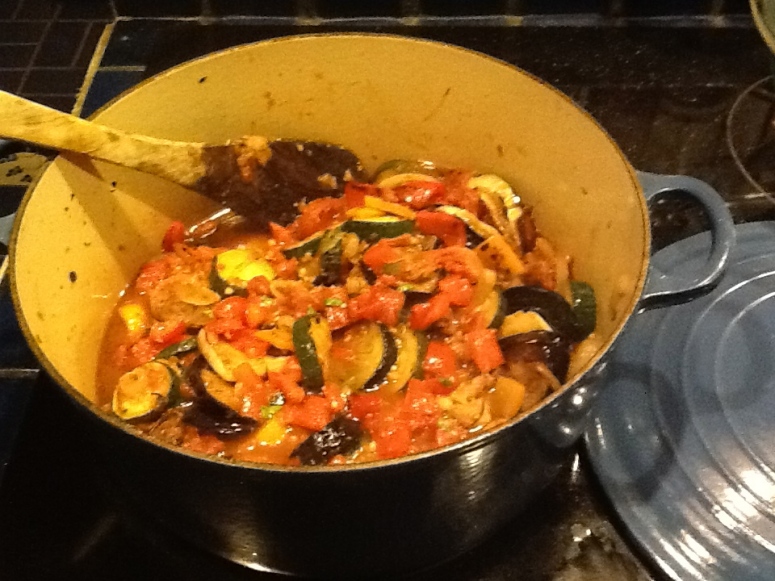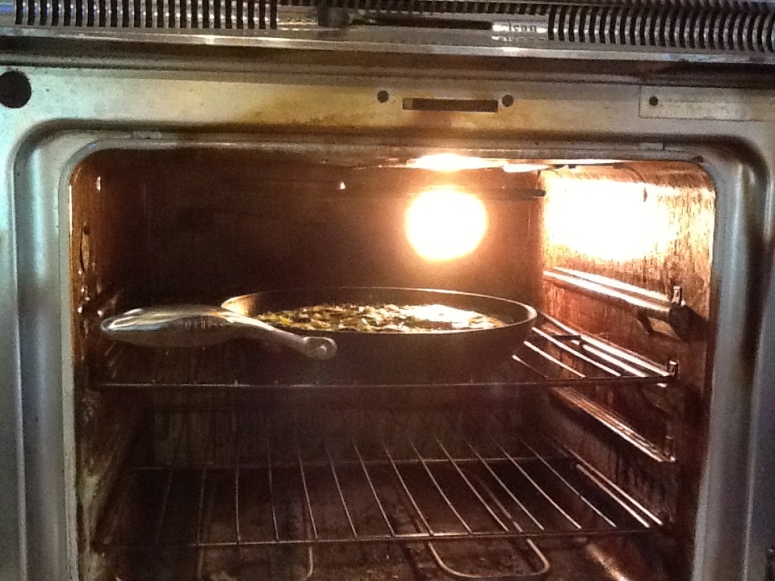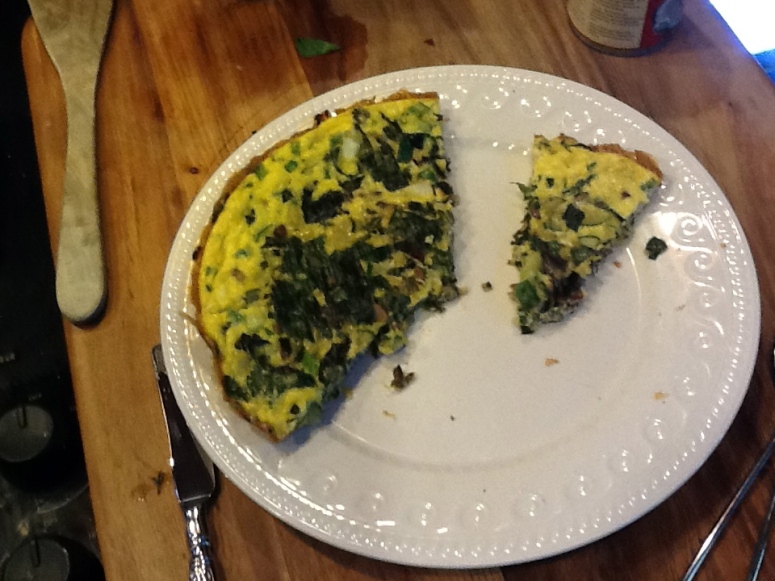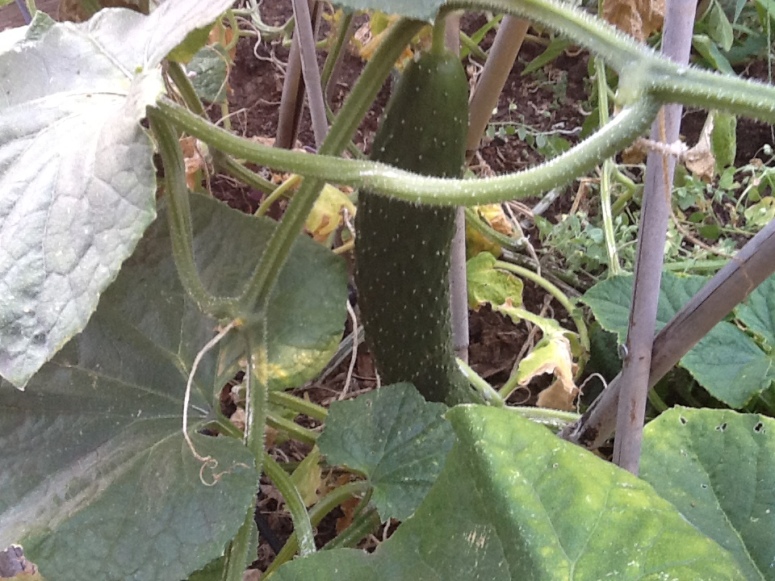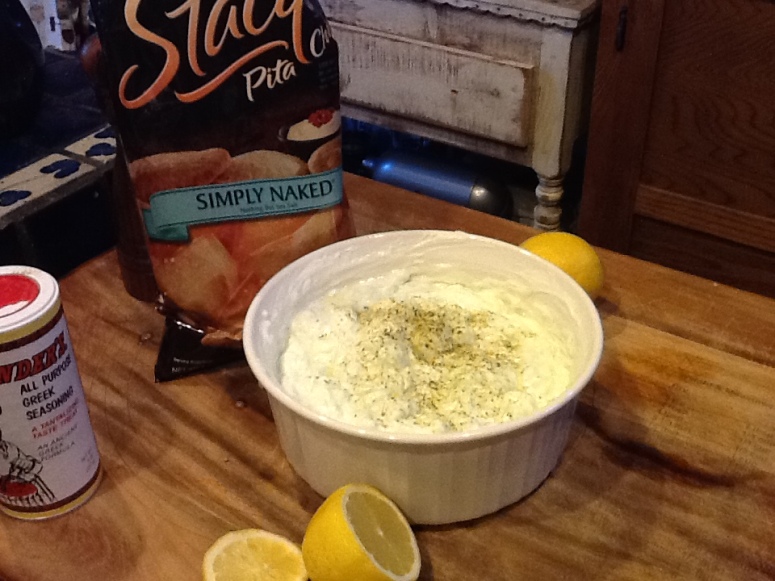I know what you’re thinking. Marmalade is traditionally made with oranges. The only problem is, no oranges in our garden, only these delicious and cute Satsuma tangerines. Tart and sweet, this Japanese variety is very cold tolerant and does very well here in Northern Cal., where we’ve had quite a few night temperatures below freezing this month. So, I decided to make some marmalade to brighten up my winter. And you know what? It turned out great. I will definitely make some more before long.
Lucy wasn’t sure what to make of the orange egg-looking things. I wonder what is goes on in that chicken brain…
My little friend Cody helps me in the garden. He decided to stop and smell the paperwhites. So cute. Well, he might look cute, but don’t let that fool you. He’s a stinker.
So, making marmalade is simple. I decided to also use some Meyer lemons my friend Kate gave me. And I decided to make this batch with Thai spices. I have been drinking this great Thai Rooibos tea made by Yogi. Why not incorporate those flavors into the marmalade? And I used some special Hawaiian sugar with vanilla also.
Here is the recipe:
2 Meyer lemon peels, chopped into thin strips
10 Satsuma tangerine flesh and peels, chopped into thin strips
5 cups vanilla sugar
5 cups water
3-4 star anise seed pods
1 Thai Chai tea bag (by Yogi)
Peel skins off lemons. Chop into thin strips. Chop whole tangerines into thin strips, but remove seeds (seeds will make this bitter). I used the flesh and the peel. Add water and sugar, star anise, and Thai tea bag. Bring to a boil, stirring often. You are really just dissolving the sugar here. Cover and take off the heat. Remove tea bag, and let the mixture stand overnight. (You can skip this step if you are in a hurry, however the flavors will not be as intense.)
Return to stove the following day, and bring to a boil. Reduce the heat and simmer for 45 min. to an hour. You will need to keep an eye on this, and stir it every now and again. Don’t let the mixture cook to the bottom of the pan or burn. After an hour, turn the heat up again, until the mix starts to foam. This step helps to thicken the marmalade. Cook the marmalade until it reaches 220 degrees F with a candy thermometer.
Let the mixture cool down a bit, and spoon into warmed Mason jars. Without actually doing a hot water bath canning process, this marmalade will last in the fridge for a month or so. Believe me, it didn’t last that long at our house. We ate it up in no time. Super yummy on English muffins…
Equally delicious in a savory dish. Try brushing a pork tenderloin with Dijon mustard, garlic powder, olive oil and salt. Next, scoop on a couple tablespoons of the marmalade, and bake at 350 degrees for 30 minutes. Bon Apetit, and enjoy the fruits of winter!
Grow-Eat-Love

